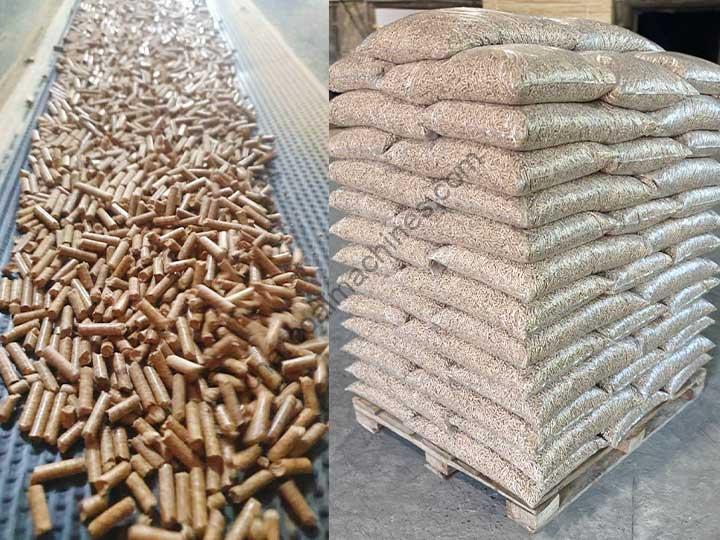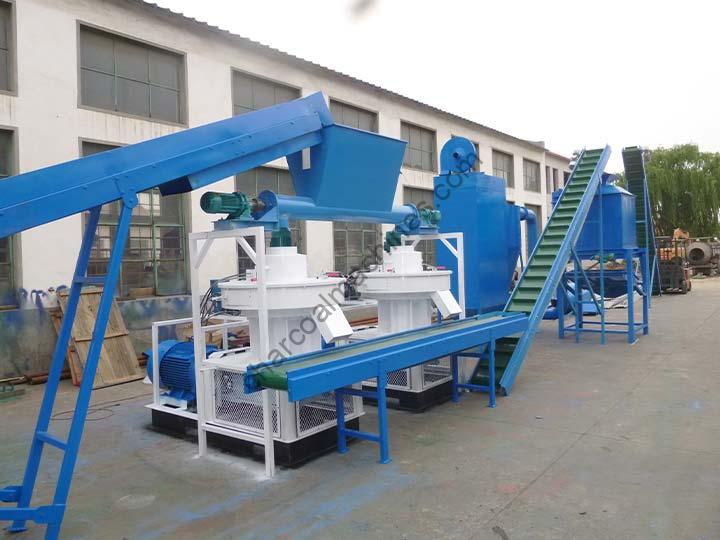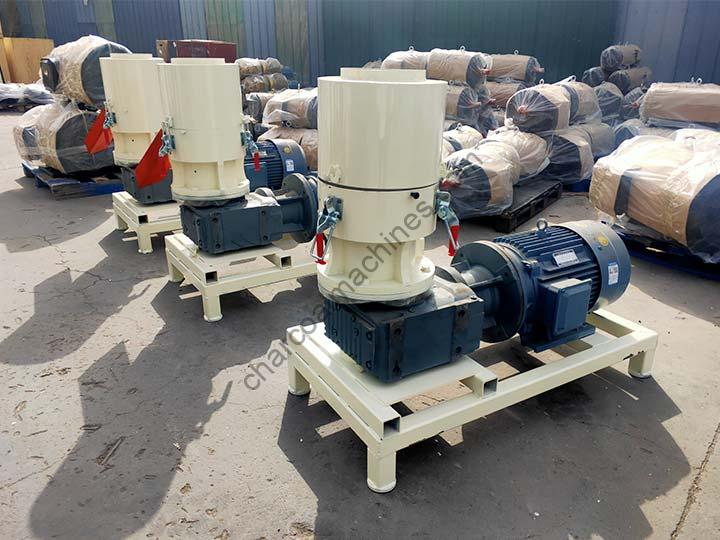왜 전 세계적으로 목재 펠릿 가격이 상승하고 있나요?
목재 펠릿, 또는 바이오매스 연료 펠릿은 주로 소나무, 삼나무, 자작나무, 포플러, 과일나무, 농작물 오렌지 줄기 등을 원료로 가공됩니다. 목재 펠릿은 주로 연소, 바비큐, 벽난로 난방에 사용되며, 연소 효율은 80% 이상입니다. 최근 몇 달간 전 세계 목재 펠릿 가격이 상승하는 이유는 무엇일까요?
목재 펠릿 가격 상승 원인 분석
최근 몇 년간 사회와 산업 발전이 지속됨에 따라 전 세계적으로 에너지 수요가 증가하고 있습니다. 그러나 기존 석탄, 석유, 천연가스의 매장량은 점점 줄어들고 있습니다. 러시아-우크라이나 전쟁으로 인해 글로벌 에너지 가격도 급등하고 있습니다.
7월 10일 이후, EU는 러시아에 대한 수출 무역 제한을 시행하여 러시아와 벨라루스의 목재 제품 공급을 제한하고 있습니다. 그중에서도, 러시아 목재 펠릿의 유럽 수출은 러시아 기업의 주요 시장인 유럽으로의 수출이 완전히 중단되었습니다.
월스트리트저널의 보고서에 따르면 벨라루스, 러시아, 우크라이나에서 생산된 목재 펠릿이 보류되고 가격이 상승했다고 합니다. 그 결과, 미국의 폐목재 수출은 1톤당 170달러로 급증했으며, 작년에는 140달러였습니다. 올해 들어 미국은 740만 톤의 펠릿을 해외로 수출했습니다.

2022년 1분기 미국 목재 펠릿 수출량은 209만 톤으로, 가치가 3억 1269만 달러였으며, 이는 작년 같은 기간의 182만 톤, 2억 7351만 달러와 비교됩니다.
우크라이나 전쟁으로 인한 손실을 보충하기 위해 추가 공급이 필요하며, 약 300만 톤이 대체되어야 합니다.
높은 에너지 비용과 러시아의 공급 부족 속에서 유럽 국가들은 목재 펠릿 재고 수준이 하락하는 것을 목격하기 시작했으며, 유럽 생산자들은 새로운 공급원을 찾고 있습니다.
공급 부족 외에도, 현재 펠릿 가격은 모든 유럽 가구가 감당하기 어려운 수준입니다. 오스트리아의 펠릿 가격은 사상 최고치를 기록했으며, 전년 대비 53% 이상 상승했습니다. 특히 벌크 목재 펠릿의 평균 가격은 작년보다 66% 상승했습니다.
전쟁과 공급 제약으로 인해 유럽에서도 가스와 석유 가격이 급등했습니다.
영국의 Drax Group Plc는 최근 캐나다 브리티시 컬럼비아에 위치한 Princeton Standard Pellets를 인수했다고 발표했으며, 이는 Drax가 캐나다 목재 칩 펠릿 산업에서의 입지를 강화하고 글로벌 목재 칩 펠릿 시장에서의 점유율을 높이기 위한 조치입니다.
캐나다 브리티시 컬럼비아의 제재소와 펄프 공장 폐쇄 발표로 목재 수확량이 감소했고, 이에 따라 펠릿 생산자들이 사용할 수 있는 목재 칩의 양도 줄어들고 있습니다. 캐나다 목재 펠릿 협회의 산업 데이터에 따르면, 이번 인수로 BC의 연간 생산 능력이 기존 157만 톤에서 9만 톤 증가할 것으로 예상됩니다.
목재 펠릿은 주로 연소와 벽난로 난방에 사용되며, 벽난로 난방이 여전히 실천되고 있는 유럽에서 인기가 많습니다. 영국만 해도 난방 시장이 20만 톤의 부족을 겪고 있습니다.
목재 펠릿과 같은 바이오매스 연소의 연소율이 높아지고 있으며, 석탄보다 환경 오염이 훨씬 적기 때문에 더 많은 나라들이 이를 사용하도록 유도되고 있습니다. 이를 위해 Drax는 2030년까지 연간 500만 톤에서 800만 톤으로 목재 펠릿 생산 능력을 늘리겠다는 목표를 발표했습니다. 이는 화석 연료의 글로벌 대체와 탈탄소화 에너지 시스템을 지원하기 위한 조치입니다.

목재 펠릿 가격 상승 현상에 어떻게 대처할 것인가?
전 세계 목재 펠릿 가격 상승은 많은 에너지 프로젝트 투자자에게 기회를 제공합니다. 목재 펠릿 생산에 참여하는 것도 많은 신규 사업자들의 선택지 중 하나가 될 것입니다. 그렇다면 목재 펠릿 생산은 어떻게 할까요? 매우 간단합니다. 먼저 목재 펠릿 가공에 적합한 조건이 있는지, 즉 원자재와 일정한 투자 예산이 있는지 확인해야 합니다.

목재 펠릿 생산에 사용되는 원자재는 보통 저렴하고 다양한 바이오매스 폐기물, 예를 들어 나무 뿌리, 가지, 목재 조각, 톱밥, 짚 등에서 풍부하게 구할 수 있습니다. 또한, 목재 펠릿을 생산하려면 목재 펠릿 가공 장비를 구매해야 합니다. 고객은 예산에 따라 소형 목재 펠릿 기계 또는 완전한 목재 펠릿 생산 라인을 선택할 수 있습니다.
마지막으로, 고객은 자신이 생산한 목재 펠릿의 판매를 고려해야 합니다. 일반적으로 목재 펠릿은 지역 시장, 예를 들어 식당, 목욕탕, 제련소, 발전소 등에 직접 공급할 수 있으며, 대량으로 다른 나라로 수출할 수도 있습니다.

댓글 없음.